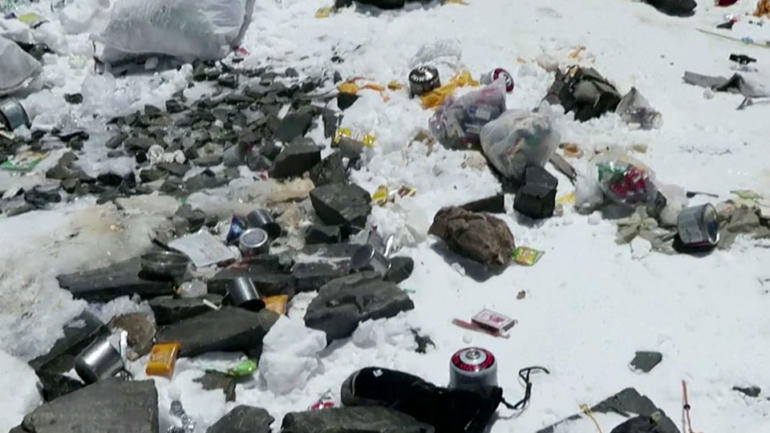Mount Qomolangma — also known as Mount Everest attracts thousands of visitors every year.
But it’s struggling with a problem that keeps piling up.
CGTN’s Frances Kuo explains.
Standing at more than 8800 meters, Mount Qomolangma is famous for breathtaking views. But, parts of the peak have become an eyesore.
Tons of trash have formed mountains of their own – piles of beer cans, discarded equipment and human waste.
It’s unable to degrade because of the frigid temperatures. The mountain’s glaciers are melting from climate change, exposing the trash even more.
Six years ago, Nepal ordered each climber to bring down at least eight kilograms of waste, or risk losing thousands of dollars in trash deposits.
It’s the same rule on the Tibet side with a $100 fine tacked on for every kilogram that falls short.
But climbers don’t always obey, and there isn’t enough manpower for monitoring.
In 2017, climbers in Nepal carried down nearly 25 tons of trash and 15 tons of human waste, according to pollution control officials. That’s enough to fill three double-decker buses.
Trekkers say the work is often as strenuous as the climb itself, requiring them to consume valuable oxygen.
Part of the problem is an increase in climbers, lured by an abundance of low-cost operators. There’s concern pollution on the peak could trickle down to water sources.
Recently, climbers are becoming drawn to the northern, Chinese side from the Nepal side made up of dangerous ice paths.
China is trying to cut down the trash by restricting the number of climbers by a third – a maximum of 300 a year – and limiting them to the spring season.
The cleanup campaign will also include recovering the bodies of climbers who have died.
Portable toilets and trash-sorting centers are being set up.
There’s also talk of installing a plant that would turn human waste into fertilizer and establishing a team solely for trash collection.
“I feel very fortunate for the fact that, you know, we’ve got an opportunity to work with the trash from Everest,” said Kripa Rana Shahi, Director of art group Da Mind Tree.
Some are turning trash into artistic treasure.
A group of artists put together 75 art pieces, entirely made from the mountain’s rubbish.
They want to display the works in the region as a reminder of the damage inflicted by the litter.
Despite the efforts, environmentalists still worry the world’s highest peak is on its way to becoming the world’s highest trash dump.
Alan Arnette discusses cleanup efforts on Mount Qomolangma
CGTN’s Sean Callebs spoke with mountaineer Alan Arnette about cleanup efforts on Mount Qomolangma.
 CGTN America
CGTN America

